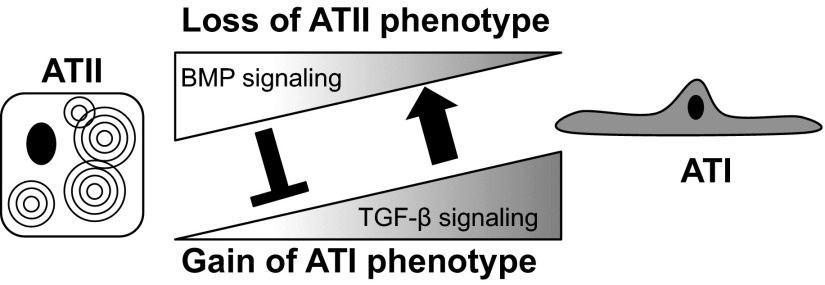Fig. 9.
Hypothetical model for how TGF-β and BMP pathways affect the transdifferentiation of ATII cells. Cuboidal ATII cells spontaneously undergo transdifferentiation to ATI cells when cultured ex vivo. BMP signaling in ATII cells inhibits transdifferentiation mainly by blocking the gain of ATI-specific genes (black T bar). TGF-β signaling increases as ATII cells obtain ATI-like properties and promotes the loss of ATII cell phenotype mainly by stimulating the loss of ATII-specific genes (black arrow). Because TGF-β and BMP signaling antagonizes each other, the relative levels of these two opposing signaling systems determine the rate of transdifferentiation.

